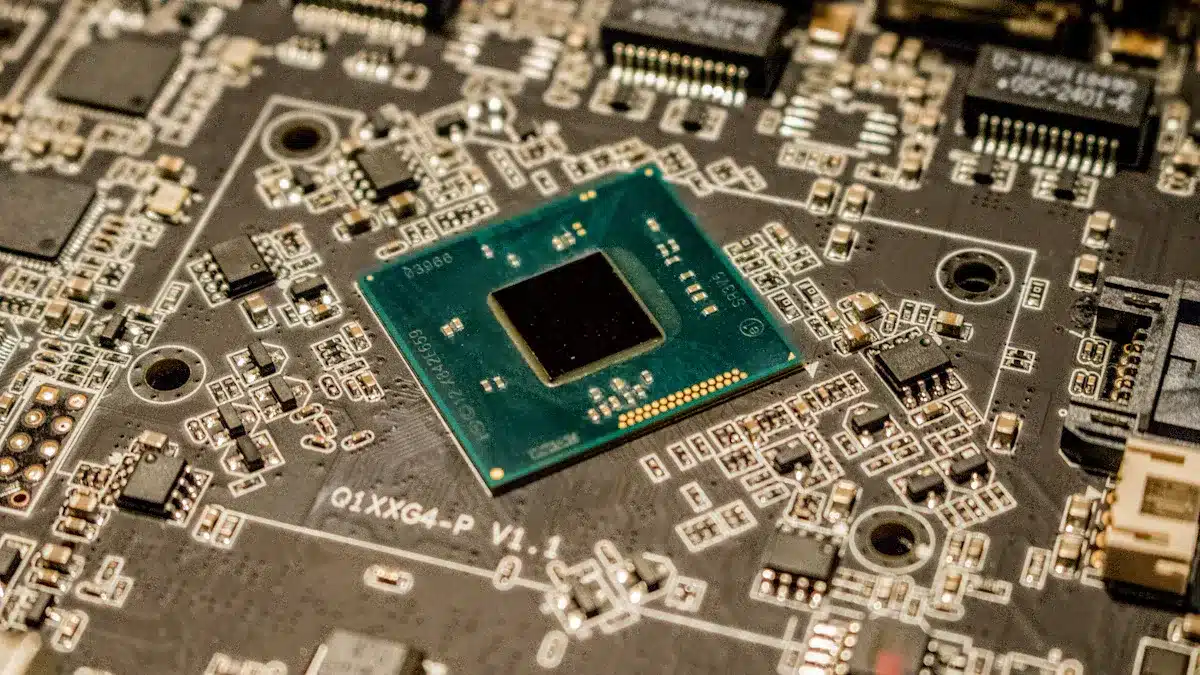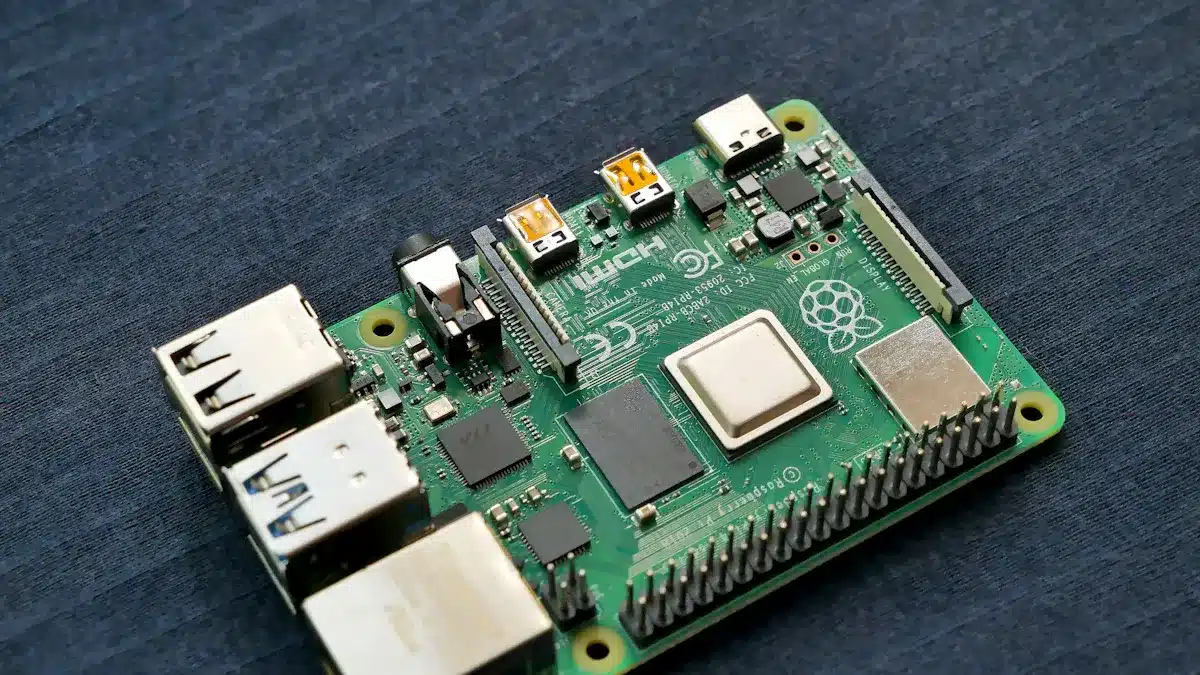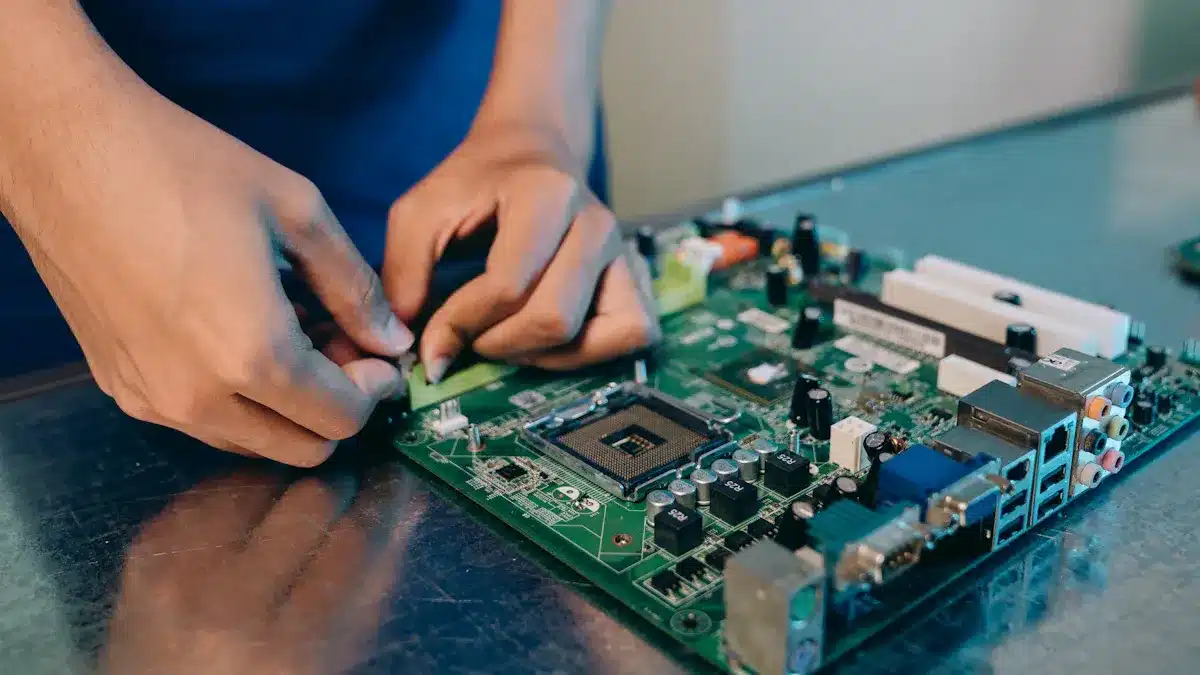
PCBA meaning refers to a circuit board with all its components attached and soldered, making it functional in any device. In contrast, a PCB is just the bare board with electrical pathways but no working parts. It doesn’t operate until you add components. Understanding the pcba meaning and the difference between PCB and PCBA helps you make better choices for projects or when purchasing electronics. The board in a PCBA directs signals, follows a design plan, and ensures electricity flows correctly. High-quality PCBA requires the right parts, precise assembly, and strong soldering.
Key Takeaways
PCBA is a circuit board with all its parts on it and ready to use. PCB is just the plain board with no parts on it.
The PCBA assembly process puts parts and solder on the PCB. This makes it work in things like phones and cars.
PCBA costs more than PCB because it has parts, work, and testing. But it saves time and makes sure it works well.
Use PCB if you want to learn, test, or do easy projects. Pick PCBA if you need a finished product that works right away.
Choose the right board based on your project, money, skills, and how well it must work.
PCBA Meaning

Definition
You might hear the term PCBA meaning if you work with electronics. PCBA stands for Printed Circuit Board Assembly. This is a pcb with all its parts put on. The board is not empty anymore. It now has things like resistors, capacitors, chips, and connectors. These parts are soldered onto the board to make it work. Sources like Wikipedia and Altium say that after making a pcb, you add parts to get a printed circuit board assembly. This step changes the board from just a base to a working part of a device. Top companies follow rules like ISO 9001 and IPC-2221B to make sure each pcb assembly is safe and high quality.
Note: In electronics, PCBA means a pcb that is ready to use in products like phones, computers, or cars.
Functionality
A printed circuit board assembly does more than hold parts. It lets electricity move between the parts so the device works. You use a pcba to control signals, power, and data in gadgets. For example, in a smartphone, the pcba runs the screen, battery, and wireless features. Companies use machines and AI to make pcb assembly better. Robots put parts on fast and in the right place. AI checks for mistakes, so there are fewer problems and better products. These steps help you get devices that last longer and work well.
Automation in pcba production lowers mistakes and makes assembly faster.
AI-powered checks find problems early and make quality better.
Using lead-free soldering helps protect the environment.
The electronics industry is growing quickly. In 2021, contracts were about USD 481.3 billion. Experts think this will more than double by 2030. This growth means you should know pcba meaning and quality control. Good pcb assembly saves money and helps your projects do well.
Assembly Process
The assembly process changes a bare pcb into a finished pcba. First, you put solder paste on the board. Then, machines or people place each part where it goes. There are two main ways to add parts: Surface-Mount Technology (SMT) and Through-Hole Technology (THT). SMT puts parts on top, while THT puts leads through holes.
Place parts using SMT or THT.
Solder the parts. Use reflow soldering for SMT and wave or hand soldering for THT.
Check the board with Automated Optical Inspection (AOI) and X-ray machines.
Test the finished pcba with electrical and working checks.
You have to follow careful steps to keep quality high. Companies watch things like defects per million, first pass yield, and rework rates. They use visual checks, AOI, and X-ray to find mistakes. Final tests make sure the printed circuit board assembly works before it leaves the factory. Training, clear instructions, and good records help the assembly process stay smooth and reliable.
Tip: Always pick a manufacturer that follows industry rules and uses strong testing for pcb assembly. This helps your pcba work well in your project.
PCB
Printed Circuit Board
You see a printed circuit board in almost every electronic device. This board connects and supports electronic parts. The pcb acts as the backbone of your device, letting electricity flow between components. When you look inside a phone, computer, or TV, you find a circuit board with copper lines and pads. These lines carry signals and power to different parts. The global pcb market keeps growing. Reports show the market reached $67.9 billion in 2023 and could rise to $92.4 billion by 2029. This growth comes from new technology and more demand for smart devices.
A printed circuit board helps your device work by linking all the parts together in a safe and organized way.
Structure
A pcb has several layers. You start with a base, usually made from fiberglass or plastic. On top of this base, you find thin copper layers. These copper paths form the circuits that connect each part. Some boards have only one layer, while others have many. The structure of a circuit board must handle stress and heat. Research shows that testing methods like strain gage testing help check if a pcb can survive bending or pressure. Good structure means your circuit board lasts longer and works better in tough conditions.
The main parts of a pcb include:
Substrate (base material)
Copper traces (paths for electricity)
Solder mask (protective layer)
Silkscreen (labels and markings)
Types
You can choose from many types of circuit boards. The most common types are single-sided, double-sided, and multilayer. A single-sided pcb has copper on one side. A double-sided pcb has copper on both sides. Multilayer boards have several layers stacked together. Experts also group circuit boards by their flexibility. Some are rigid, while others bend or twist. Flexible pcbs work well in devices that need to move, like wearable tech. High-density interconnect (HDI) boards pack more circuits into a small space. Industry reports show that each type serves different needs, from simple toys to advanced medical devices.
Common types of pcb:
Single-sided
Double-sided
Multilayer
Rigid
Flexible
Rigid-flex
HDI
Tip: When you pick a circuit board, think about your device’s size, shape, and how much power it needs.
Key Differences

Understanding the key differences between pcb and pcba helps you make smart choices for your electronics projects. You can see these differences in their definitions, how you make them, their costs, and where you use them. The table below gives you a quick side-by-side look at pcb and pcba:
Aspect | PCB (Printed Circuit Board) | PCBA (Printed Circuit Board Assembly) |
|---|---|---|
Definition | Bare board with copper pathways, not functional | PCB with all components mounted and soldered, fully functional |
Process | Fabrication of board only | PCB plus assembly of electronic parts |
Cost | Lower, no components or assembly | Higher, includes parts, labor, and testing |
Use Cases | Prototyping, simple devices, base for circuits |
Note: PCBA = PCB + assembly. Only PCBA is ready to use in a device.
Definition
You need to know what sets pcb and pcba apart. A pcb is just the base board. It has copper lines and pads, but it cannot do anything by itself. You use it as the foundation for your circuit. On the other hand, pcba means the board has all its parts attached. This includes resistors, chips, and connectors. Now, the board can work inside a device. You can think of pcb as the skeleton and pcba as the full body with muscles and organs. Only pcba is functional because it has everything needed for the circuit to work.
Manufacturing
The way you make a pcb is different from how you make a pcba. For a pcb, you start with layers of fiberglass and copper. Machines cut, etch, and drill the board to create the right paths for electricity. You add a solder mask and silkscreen for protection and labels. This process is mostly automated and focuses on making the board strong and accurate.
When you move to pcba, you add more steps. You use special files to tell machines where to place each part. You put solder paste on the board, then place the components using machines or by hand. After that, you heat the board to melt the solder and hold the parts in place. You check the finished board with machines and tests to make sure it works. PCB assembly needs skilled workers and advanced machines. You also need to manage many parts and suppliers. This makes the process more complex than just making a pcb.
PCBA manufacturing uses automated pick-and-place machines for speed and accuracy.
Quality checks like X-ray and optical inspection help catch mistakes early.
You need trained workers for soldering, inspection, and repairs.
Cost
The cost of pcbas is higher than the cost of a simple pcb. When you buy a pcb, you pay for the materials and the work to make the board. This cost stays low because you do not add any parts. When you order a pcba, you pay for the board, all the electronic parts, and the labor to put them together. You also pay for testing and quality checks. The cost of pcbas can change based on how many parts you use, how complex the design is, and how fast you need them. If you use advanced assembly methods or need special packaging, the price goes up. Large orders can lower the cost per unit, but the total cost of pcbas will always be more than just the pcb.
PCB is cheaper because it is just the board.
PCBA costs more due to assembly, parts, and testing.
Fast delivery, special shapes, or high-tech parts can raise the cost of pcbas.
Application
You use pcb and pcba in different ways. A pcb is great for building and testing new ideas. You might use it in simple devices like calculators or as a base for learning about circuits. When you need a working product, you choose pcba. This is what you find in phones, computers, cars, and medical tools. PCBA is the heart of any finished electronic device. It controls everything from screens to sensors. In cars, pcba runs safety systems and entertainment. In hospitals, pcba powers monitors and scanners. You cannot use a pcb alone in a real product. Only pcba gives you a complete, working solution.
PCB is best for prototyping and simple gadgets.
PCBA is needed for finished products in tech, cars, and healthcare.
Advanced trends like miniaturization and smart testing make pcba even more useful today.
Tip: Always match your choice to your project. Use pcb for learning and design. Choose pcba when you need a device that works right out of the box.
When to Use PCB or PCBA
Choosing for Projects
You have to pick between a PCB and a PCBA for your project. If you want to try out a new idea, use a PCB. It is good for learning or making early models. When you need a device that works, choose a PCBA. This board has all the parts on it and is ready to use.
Think about these things before you decide:
Project Stage: Use a PCB for testing and design. Pick a PCBA for finished products.
Budget: PCBs are cheaper. PCBAs cost more because they have parts and assembly.
Time: PCBAs save time since you do not have to add parts yourself.
Skills: If you are not good at assembly, a PCBA is safer.
Quality: PCBAs are checked and tested, so they are more reliable.
Tip: Check if you need just a board or a full, working solution for your project.
Industry Examples
Different industries use PCBs and PCBAs in their own ways. The table below shows how each one fits certain needs:
Aspect | PCB | PCBA | Industry Examples |
|---|---|---|---|
Cost | Cheaper to make | Costs more because of parts and assembly | Consumer electronics (TV remote) |
Complexity | Simple, just the board | More complex, has soldered parts | Automotive electronics |
Reliability | Not as reliable, depends on parts | More reliable, parts are built in | Medical devices, computers |
Application Suitability | Good for basic use only | Made for special jobs | Graphics cards, motherboards |
Manufacturing Process | Making the board, copper lines | Soldering, assembly, and testing | High-performance electronics |
Quality Control | Checks the board and copper lines | Checks solder joints and tests how it works | Regulated industries (medical, automotive) |
Manufacturer Selection | Good at making PCBs | Good at assembly and meeting standards | Telecommunications, medical electronics |
You find PCBs in simple things like TV remotes. PCBAs are in harder things like computers, cars, and medical tools. In cars, special ways like wave soldering and reflow soldering make strong boards. Medical tools need careful checks and tests to be safe. Companies with good assembly skills and modern tools can make high-tech and safe electronics.
Note: Always choose what fits your project’s needs, money, and how reliable it must be.
You have learned that a PCB is just the starting board for your project. A PCBA is a board with all its parts, so it works right away. The table below shows the biggest differences:
Aspect | PCB | PCBA |
|---|---|---|
Definition | Bare board, no components | Assembled board, fully functional |
Functionality | Passive, not ready to use | Active, ready for devices |
Cost | Lower | Higher, includes assembly and testing |
Production Time | Faster | Longer, more steps involved |
When picking between PCB and PCBA, think about what your project needs. Also, look at how much money and time you have. If you want to learn more, you can read about PCB materials and design. You can also check out “A Practical Guide to RF and Mixed Technology Printed Circuit Board Layout” for expert layout tips.
FAQ
What does PCBA stand for?
PCBA stands for Printed Circuit Board Assembly. You get a PCBA when you add and solder all the electronic parts onto a bare PCB. This makes the board ready to use in devices.
Can you use a PCB without assembly?
No, you cannot use a bare PCB in a device. You must add and solder components to the board. Only then does it become a working PCBA.
How do you choose between PCB and PCBA for your project?
Use a PCB for learning, designing, or testing ideas.
Choose a PCBA when you need a finished, working product.
Think about your skills, time, and budget before you decide.
Are PCBAs more expensive than PCBs?
Yes, PCBAs cost more. You pay for the board, all the parts, assembly work, and testing. A PCB costs less because it is just the board without any components.
See Also
Understanding PCBA And Its Definition In Electronics
Exploring The Meaning And Function Of PCBA In Electronics
How PCBA Is Defined And Its Purpose In Electronics
Decoding PCBA Abbreviation And Its Significance In Electronics